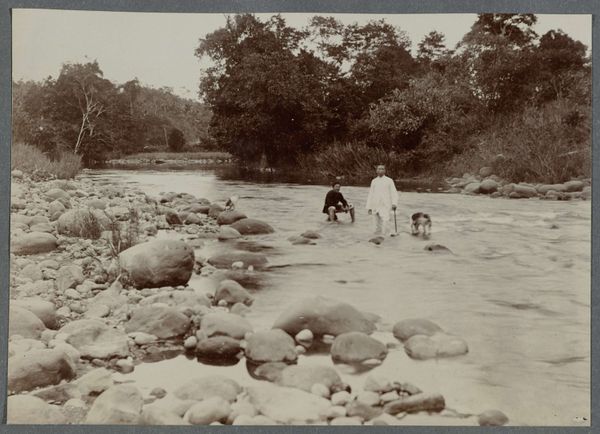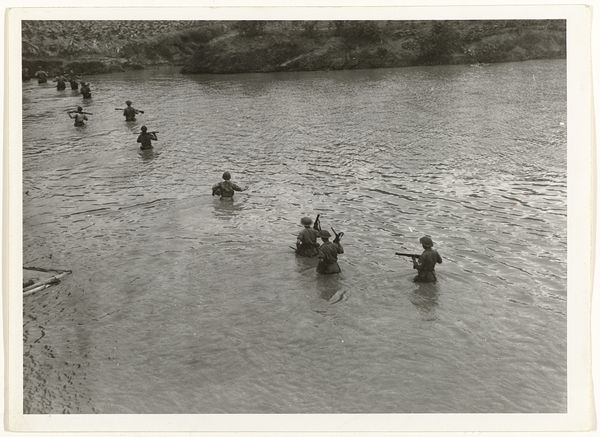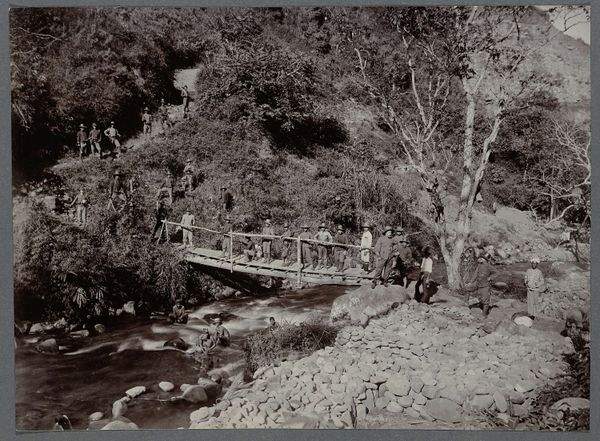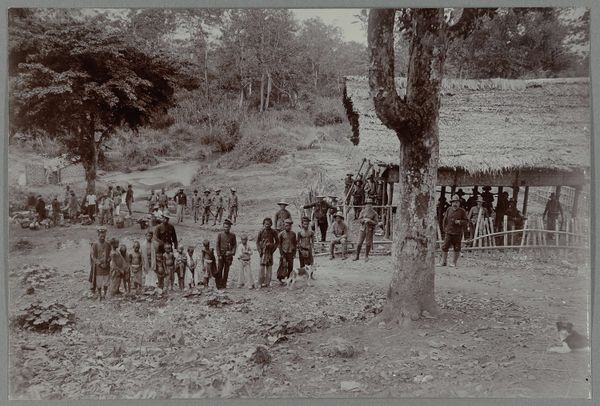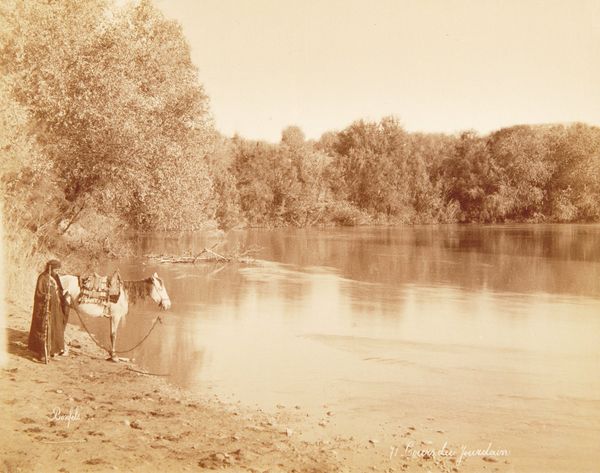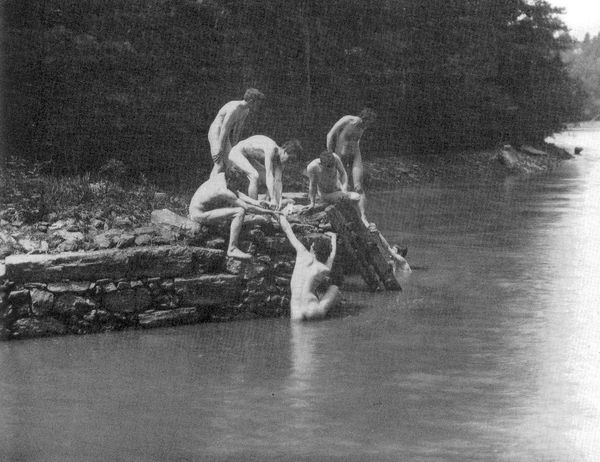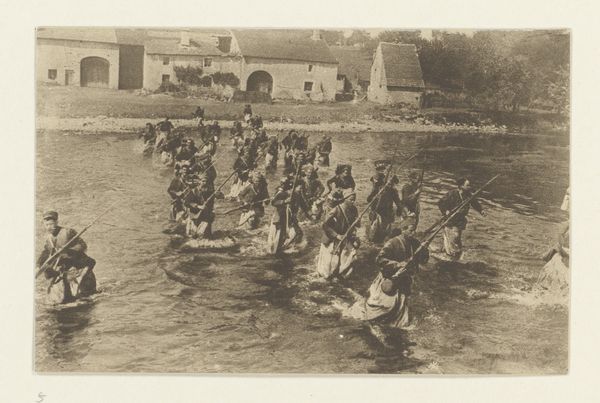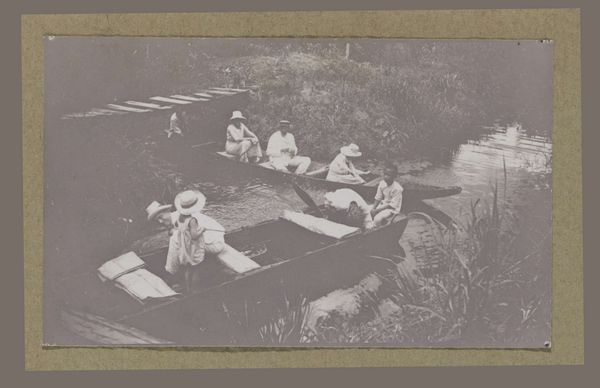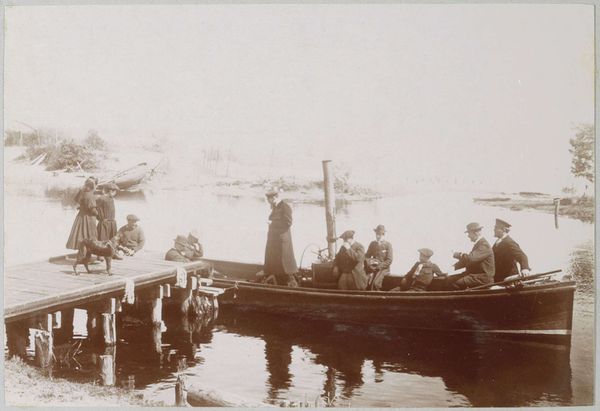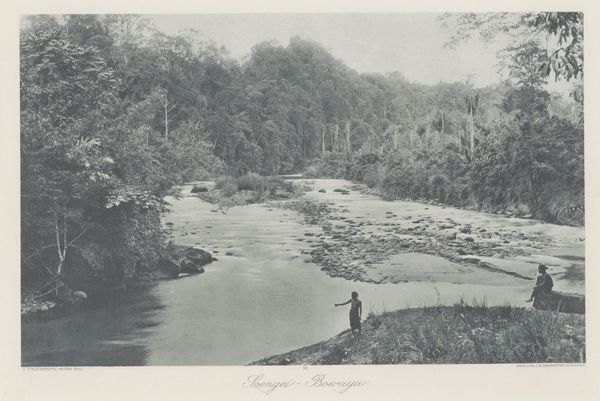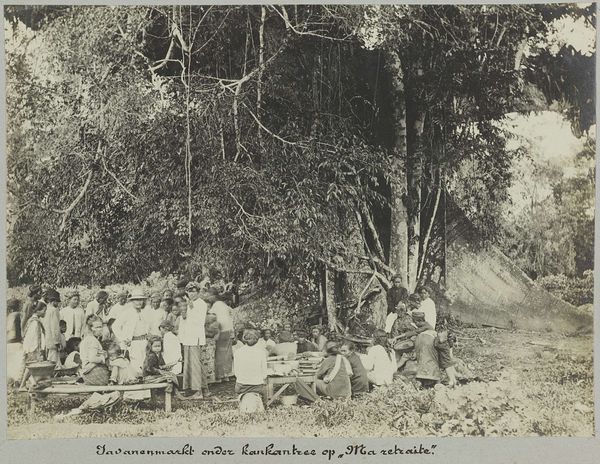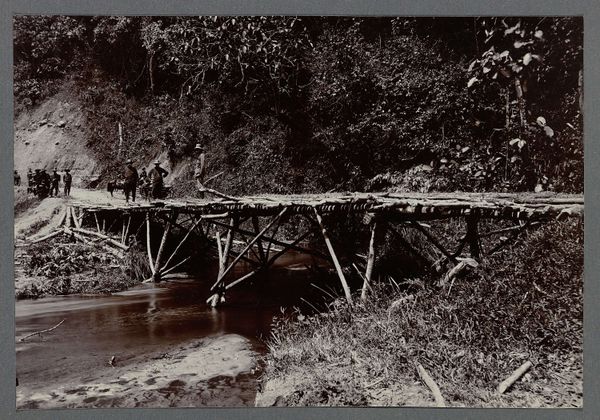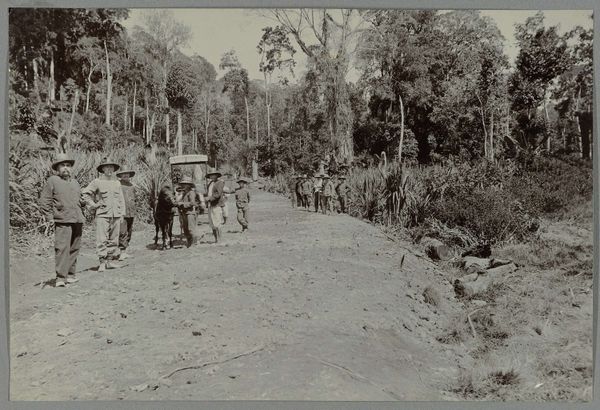
photography
#
landscape
#
nature
#
photography
#
outdoor scenery
#
orientalism
#
genre-painting
#
realism
Dimensions: height 174 mm, width 237 mm
Copyright: Rijks Museum: Open Domain
Curator: This is a photograph entitled "Vrouwen doen de was op rotsen in de rivier", which translates to "Women doing laundry on rocks in the river." The photographer is Johanna Hermina Marmelstein, and the work dates roughly between 1900 and 1915. Editor: My first impression is the starkness and candid quality of this black and white photograph. The composition centers on a group of women working in the river, a scene filled with repetitive actions yet also a strange kind of calm. Curator: Indeed, the apparent calm belies a complex story. Considering the timeframe, this image fits into a broader narrative of Orientalism and colonialism, presenting a view of labor and daily life through a Western lens. It raises questions about power dynamics and the representation of women within those historical contexts. How much agency did these women have in the photographic process? Was this intended as documentation or exoticization? Editor: That's a vital point. Shifting our gaze toward the materiality, observe the rocks they're using – how were these gathered and constructed? Then look at the piles of fabric; considering the likely methods for production, weaving, dyeing – it prompts reflection on the raw effort behind clean clothing. The labor is tangible even in this still image. Curator: And it is essential to read the silences as well. What does it mean that this communal labor, performed by women, occurs in the liminal space of the river, literally between worlds? It is a space for cleaning, certainly, but also of potential social connection and even resistance against the domestic sphere. It prompts thinking about how intersectional identities impact lived experiences. Editor: Agreed. The photograph feels intentionally documentary but also voyeuristic, raising many questions about labour as performance. By closely observing the scene and focusing on both the subjects and context we can unpick some uncomfortable threads around production and gendered labor. Curator: Exactly. This photo is a document of a specific time, place, and perspective but viewing through modern frameworks of gender, class, and identity broadens the context and allows deeper inspection. Editor: Ultimately, Marmelstein's work gives us pause to consider the immense web of activity hidden within basic, everyday items and the social processes involved.
Comments
No comments
Be the first to comment and join the conversation on the ultimate creative platform.
